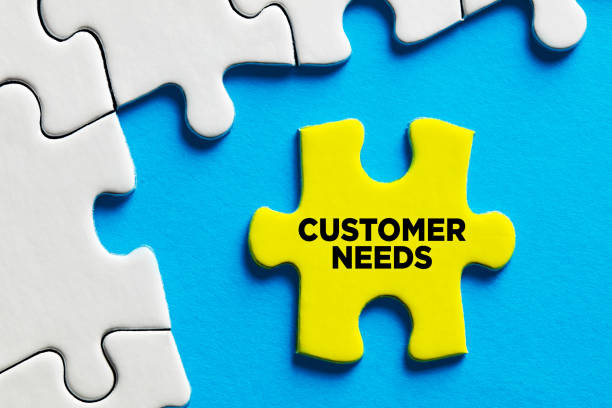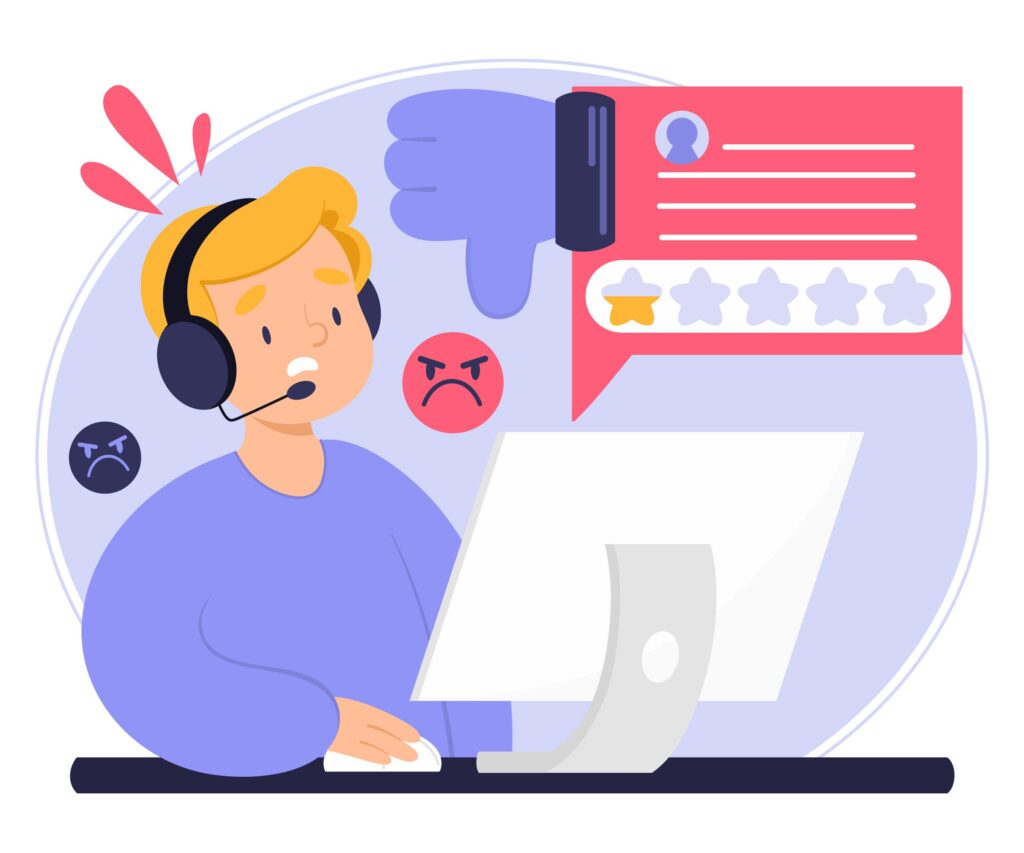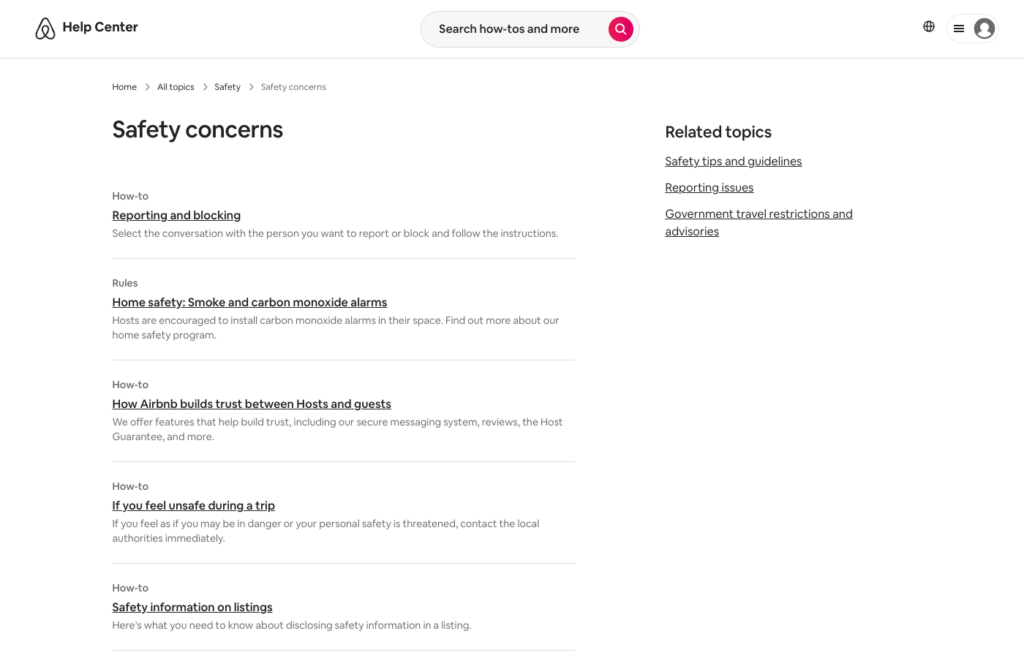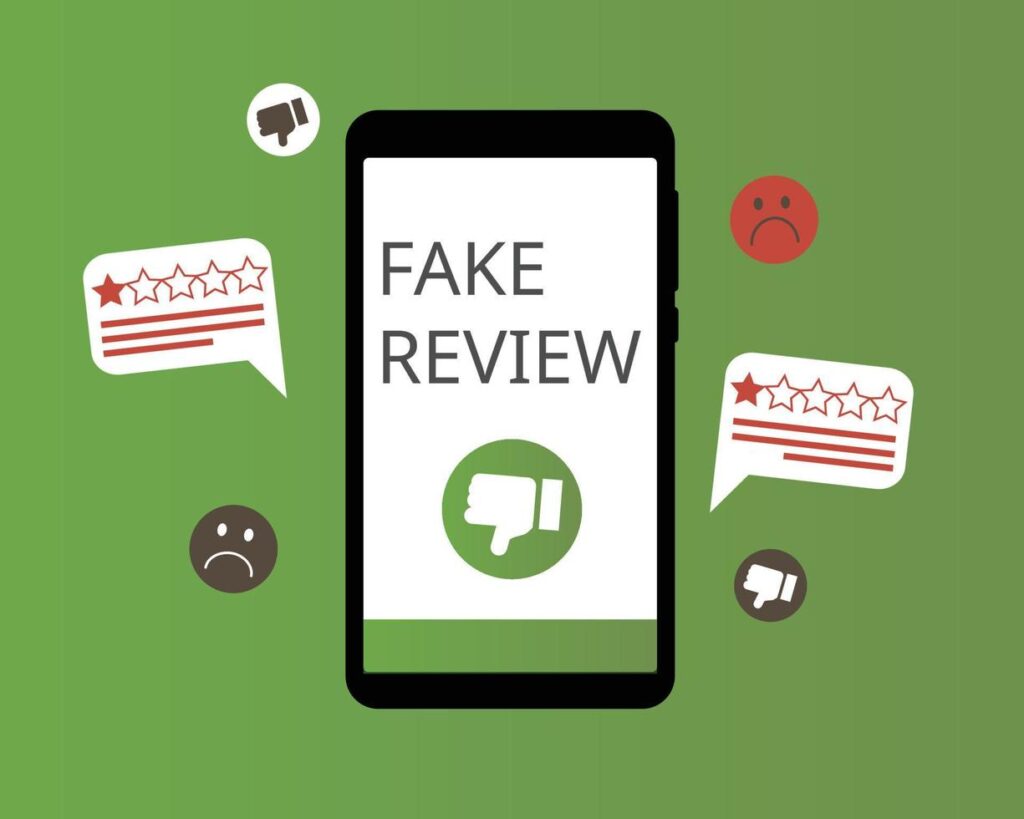
Imagine Sarah excitedly ordering a new pair of running shoes online, only to receive a poorly made product with terrible customer service. Disappointed, she leaves a scathing review.
But what if Sarah’s frustration becomes a golden opportunity? Believe it or not, negative reviews, when handled correctly, can be a powerful tool for businesses to improve, connect with customers, and gain a competitive edge.
In today’s digital age, online reviews are the new word-of-mouth. Consumers rely on them heavily to make informed decisions, with a whopping 99.9% consulting reviews before purchasing. However, perfect review scores can be a red flag. Savvy shoppers are increasingly skeptical of inauthentic, one-sided reviews. A sprinkle of negative reviews, on the other hand, adds a touch of realism and builds trust.
Instead of dreading negative reviews, let’s view them as opportunities for growth and connection. They offer a direct line to understand Sarah’s concerns, identify potential quality issues with the shoes, and improve customer service protocols.
By addressing her disappointment with empathy and taking corrective action, the shoe company can not only win Sarah back as a customer but also use her experience to improve their product and service for future runners.

Table of Contents
The Value of Negative Reviews
Negative reviews can feel like a punch in the gut, but what if they were actually a hidden weapon? In this section, we’ll explore the surprising value negative reviews hold and how they can be leveraged to strengthen your business.
Building Trust & Credibility
Let’s face it, a page filled with nothing but five-star reviews can raise an eyebrow. A sprinkle of negative reviews, on the other hand, adds a touch of realism and discourages suspicion of inauthentic, manufactured praise.
Think about it: when browsing for running shoes online, wouldn’t a few honest reviews highlighting comfort or sizing issues resonate more deeply than a sea of glowing testimonials? Consumers appreciate transparency, and negative reviews, handled correctly, can actually build trust by demonstrating that you value customer feedback and are committed to addressing concerns.
For example, Warby Parker, the popular glasses retailer actively encourages customers to post both positive and negative reviews. They even feature humorous responses to negative reviews, showcasing their commitment to open communication and customer satisfaction. This transparency has helped Warby Parker build a loyal customer base.
But the value goes even deeper. When you respond to negative reviews promptly and professionally, you showcase your commitment to customer satisfaction. This open communication loop reassures potential customers that you’re invested in resolving issues and making things right.
Customer Insights & Improvement
Negative reviews are a direct line to customer concerns, offering invaluable insights into areas where your product, service, or customer experience can be improved. By viewing negative feedback as valuable input, you can strategically leverage it to enhance your business.
Identifying Improvement Areas
These reviews provide a direct line to customer concerns, pinpointing specific issues with your product, service, or customer experience. For instance, if a disappointed runner like Sarah mentions that the shoes felt cheaply made, it could indicate a quality control issue that needs addressing.
Pinpointing Recurring Issues
Analyzing common themes across multiple negative reviews helps pinpoint recurring issues that might be impacting a broader customer segment. For example, if multiple reviewers mention slow shipping times, it highlights a potential bottleneck in your fulfillment process that requires attention.
Unveiling Unmet Customer Needs
Negative reviews can also reveal unmet customer needs, thus guiding personalized offerings. For instance, if Sarah and other customers express a desire for running shoes in wider widths, this feedback can inform product development and help cater to a more diverse customer base.

By actively listening to and addressing these concerns, you demonstrate responsiveness and a willingness to adapt. This can lead to the development of new products, improved services, and a more personalized customer experience that caters to diverse needs.
Competitive Advantage
Learning from the Competition
Just as negative reviews offer insights into your own business, they can also shed light on your competitors’ weaknesses. Let’s say Sarah discovered a competitor’s running shoe received negative reviews for poor arch support. This knowledge allows you to position your brand as offering superior arch support, attracting customers seeking a more comfortable running experience.

Addressing Customer Concerns Raised About Competitors
Furthermore, negative reviews can reveal customer frustrations with your competitors’ offerings. By addressing these concerns in your own marketing and customer service, you can attract customers who have had negative experiences elsewhere.
For instance, Dollar Shave Club capitalized on negative reviews about the high cost and hassle of traditional razor blade subscriptions. Their marketing campaign focused on affordability and convenience, resonating with customers frustrated with competitors’ offerings and propelling Dollar Shave Club to become a major player in the shaving market.
By embracing negative reviews and strategically utilizing the insights they offer, you can transform customer frustration into fuel for growth, strengthen your brand reputation, and gain a competitive edge in the marketplace.
Responding to Negative Reviews
Negative reviews can sting, but they don’t have to be a business nightmare. In fact, with the right approach, they can be a valuable opportunity to connect with customers, demonstrate your commitment to improvement, and even win back disgruntled reviewers. This section explores strategies for crafting effective responses to negative reviews and turning them into positive experiences.
Develop a Review Response Strategy
Firstly, define response timeframes to demonstrate responsiveness. Aim to address negative reviews within 24-48 hours, showing customers that their concerns are taken seriously and promptly addressed.
Next, determine who will respond to negative reviews. Assigning a dedicated team member who is familiar with your products or services and capable of clear communication ensures consistent and effective responses.
Additionally, set the tone for responses by establishing guidelines for professionalism, empathy, and a solutions-oriented approach. By maintaining a respectful and helpful demeanor in your responses, you can effectively address customer concerns and potentially turn negative experiences into positive ones.
Crafting Effective Responses
Once you have a strategy in place, focus on crafting responses that are both professional and empathetic:
- Acknowledge & Apologize: Begin by acknowledging the customer’s frustration and apologize for the inconvenience they experienced. This shows you’ve heard their concerns and validates their feelings.
- Offer Solutions: Where possible, offer solutions to address the issue raised in the review. Perhaps it’s a replacement product, a service credit, or a detailed explanation of how the issue is being addressed if a broader fix is required.
- Explain Actions Taken: If the issue stemmed from a broader problem already being addressed, explain the actions being taken to prevent similar situations in the future. This demonstrates transparency and proactive problem-solving.
- Maintain Professionalism: Always maintain a professional and courteous tone, even in the face of hostile or aggressive language. Avoid getting defensive or engaging in arguments with the reviewer.

Turning Negatives into Positives
Negative reviews can serve as catalysts for positive transformations. They provide invaluable opportunities to enhance your offerings and customer interactions.
When you make changes based on negative feedback, you show customers you care about their opinions and are always striving to get better. This demonstrates your commitment to delivering the best experience possible.
Furthermore, consider sharing success stories of resolving customer issues highlighted in reviews. This demonstrates your commitment to customer satisfaction and can reassure potential customers of your ability to address concerns.
Additional Tips
- Respond Publicly and Privately: While a public response demonstrates transparency, offer to take the conversation offline for more complex issues or to protect customer privacy.
- Don’t Delete Negative Reviews: Negative reviews, even if unfair, can provide valuable insights. Deleting them raises suspicion and can damage your credibility.
- Encourage Positive Reviews: Following a successful resolution, politely encourage the customer to update their review or leave a positive one.
Case Studies & Examples
The power of negative reviews extends beyond crafting thoughtful responses. Businesses that truly harness the value of this feedback can leverage it to drive real change. Here’s how some companies have used negative reviews to springboard into success:
Launching Successful Product Upgrades
Domino’s Pizza
In 2009, Domino’s faced widespread criticism about the poor quality of their pizza crust. Instead of ignoring the negative reviews, they took a proactive approach.
They acknowledged customer concerns, revamped their pizza recipe with a focus on fresher ingredients, and launched a self-deprecating marketing campaign highlighting the negative feedback.
This transparency and willingness to improve led to a significant sales turnaround for Domino’s, proving that negative reviews can be a catalyst for positive product innovation.
IKEA Furniture
IKEA furniture is known for its affordability and modern designs. However, negative reviews often centered around the complexity of assembly instructions.
Recognizing this issue, IKEA took a multi-pronged approach. They improved the clarity of their assembly instructions with larger diagrams and a focus on step-by-step visuals. Additionally, they launched a robust online platform with interactive assembly guides and readily available video tutorials.
Finally, they introduced a service where customers could pay for professional assembly, catering to those who preferred not to tackle the task themselves. These changes, driven by customer feedback gleaned from negative reviews, improved the overall customer experience and likely reduced return rates for incomplete or incorrectly assembled furniture.
Improving Customer Service Protocols
Zappos
Zappos, the online shoe retailer, is renowned for its exceptional customer service. This reputation wasn’t built overnight, and negative reviews actually played a role in its development.
In the early days, Zappos noticed customer frustration with lengthy return processes. They responded by implementing a free and easy return policy, allowing customers to try on shoes at home with no risk. This customer-centric approach, driven in part by negative feedback, has become a cornerstone of their success story.
Airbnb
Airbnb recognized negative reviews highlighting a lack of clear communication and guest support. They addressed this by establishing a dedicated customer service team focused on resolving guest and host issues promptly and efficiently.
Additionally, they implemented a clear communication protocol, ensuring both guests and hosts receive timely updates and support throughout the booking process. By prioritizing customer needs based on negative feedback, Airbnb has strengthened its position as a trusted platform for travelers.

Gaining a Competitive Edge
Dollar Shave Club
This company capitalized on negative reviews about the high cost and hassle of traditional razor blade subscriptions. Their marketing campaign focused on affordability and convenience, resonating with customers frustrated with competitors’ offerings and propelling Dollar Shave Club to become a major player in the shaving market.
These real-world examples showcase the transformative power of negative reviews. By listening to customer concerns and taking concrete steps to address them, businesses can create a positive feedback loop that leads to product upgrades, improved customer service, and a competitive advantage.
Ethical Considerations: The Dark Side of Reviews
While negative reviews can be a valuable source of customer feedback, there are also ethical considerations to keep in mind.
Fake Reviews
Dishonest competitors or even disgruntled employees might post fake negative reviews to damage a business’s reputation. Businesses can combat this by actively monitoring review platforms and reporting suspicious activity. Encouraging genuine customer reviews through loyalty programs or post-purchase surveys can also help dilute the impact of fake reviews.

Malicious Attacks
Disgruntled customers or online trolls may post inflammatory or untrue reviews to damage a business. While platforms often have mechanisms for users to report such reviews, businesses should also have a clear plan for responding to these situations. Maintaining a calm and professional demeanor, even in the face of negativity, can help mitigate the damage.
Privacy Concerns
Responding to negative reviews sometimes requires addressing customer-specific issues. Businesses need to be mindful of privacy and avoid disclosing sensitive customer information.
Adapting to the Future
The online review landscape is a dynamic ecosystem. To thrive in this evolving space, businesses need to be proactive and adaptable. Here’s how they can prepare for the future trends of online reviews.
Invest in Social Listening Tools
Formal reviews are just one piece of the customer feedback puzzle. Social listening tools can be invaluable assets. These tools go beyond reviews and monitor online conversations across social media platforms, forums, and other online spaces where customers are talking about your brand, your competitors, and industry trends.
By leveraging social listening tools, businesses can gain a more comprehensive understanding of customer sentiment, identify emerging issues before they snowball into negative reviews, and discover new opportunities to delight customers.
Embrace the Power of Mobile Optimization
The way we interact with the internet is constantly shifting. Today, a significant portion of online reviews are left on mobile devices. If your website or online presence isn’t optimized for mobile browsing, you’re potentially frustrating customers and hindering their ability to leave reviews or engage with your brand.
Investing in mobile optimization ensures a seamless user experience for customers on the go, making it easier for them to leave reviews and interact with your business online.
Be Transparent
Building trust with customers remains paramount in the age of online reviews. Transparency is key. Businesses should be responsive to reviews, both positive and negative. Acknowledge positive feedback and express gratitude.
When faced with negative reviews, respond promptly, professionally, and outline concrete steps you’re taking to address the customer’s concerns. Demonstrating a commitment to continuous improvement fosters trust and shows customers you value their feedback.
Final Remarks
Negative online reviews can present a challenge, but by shifting your perspective, they become a valuable opportunity for growth. They offer a direct line to customer concerns, a chance to identify areas for improvement, and ultimately, a path to building stronger customer relationships.
By following the strategies outlined in this article – from crafting thoughtful responses to implementing changes based on feedback – businesses can transform negative reviews into positive experiences. This feedback loop fosters continuous improvement, leading to a more satisfied customer base, a stronger brand reputation, and a competitive edge in the marketplace.
Remember, negative reviews are a chance to demonstrate your commitment to customer satisfaction and your dedication to improvement. Embrace the feedback, take action, and watch your business thrive.
Related Article:
The following article may contain the author’s opinions and interpretations of the subject matter. Any of the products, services, or platforms mentioned is not sponsored or affiliated.
Featured Image courtesy of Freepik
